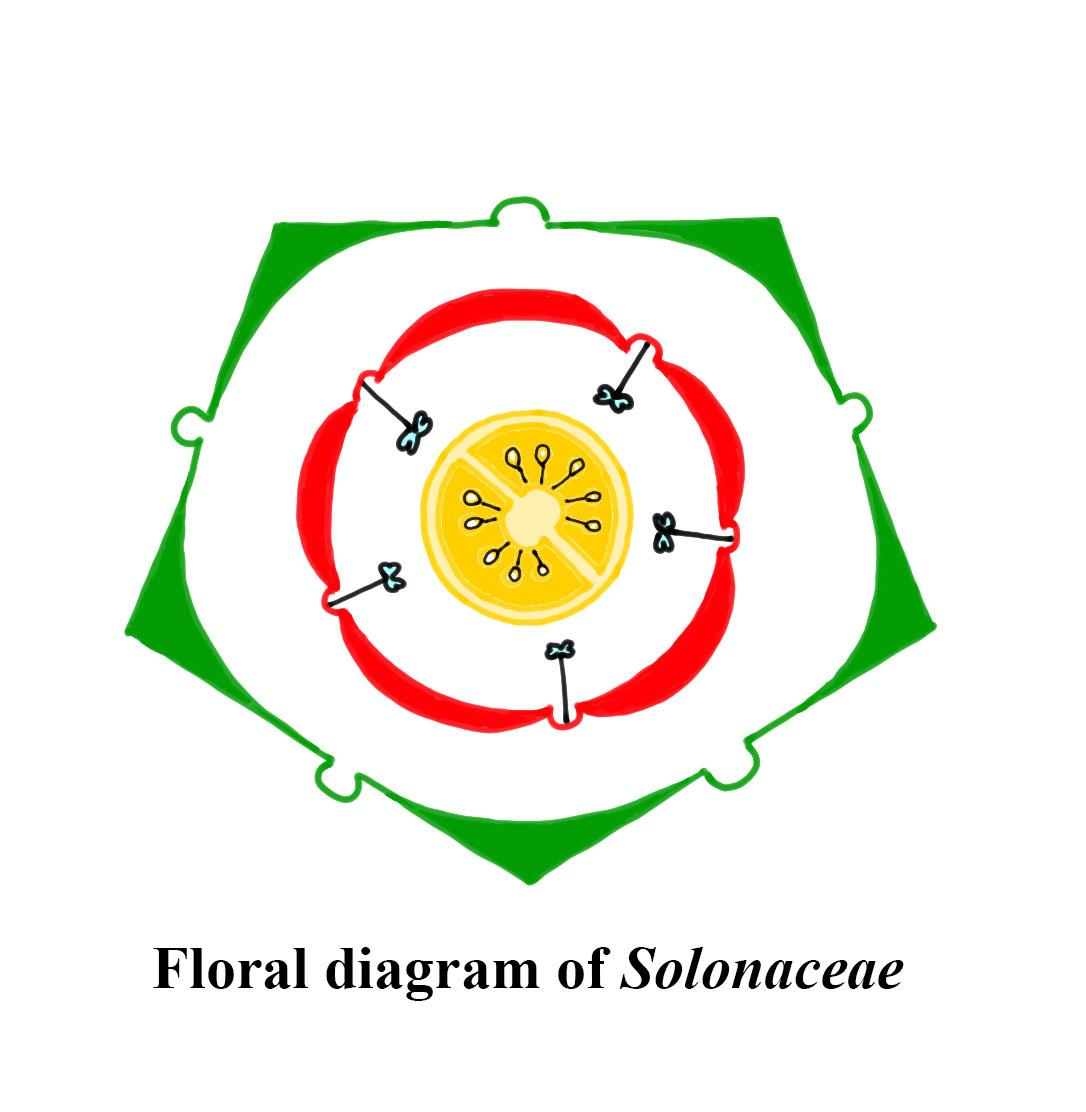
Axile placentation occurs in
(a)Asteraceae and Fabaceae
(b)Brassicaceae and Solanaceae
(c)Solanaceae and Liliaceae
(d)All of the above
Answer
475.8k+ views
Hint: It is a large family, commonly called a potato family. It shows the presence of a swollen placenta. They have widespread roles in crops as medicinal and herbs. It is a commonly characteristic representative of the monocotyledonous family.
Complete answer:
Placentation is the process in which the formation, type, and arrangement of the placenta. In bicarpellary to multicarpellary the axile placentation is present, syncarpous ovary, the carpels fuse to make septa forming a central axis and ovules are arranged on the axis.
Solanaceae is a financially significant group of blooming plants.
The gynoecium in this family is bicarpellary, syncarpous, the ovary is superior and placentation is seen.
Liliaceae or lily family is a significantly important family of flowering plants. The gynoecium in this family is tricarpellary, a syncarpous, ovary is superior and placentation is seen.
Additional information
The economic significance of certain plants having a place with the Solanaceae family are as per the following:
These are an important source of food. E.g. tomato, brinjal, and potato
These are important sources of spices. E.g. chilly
The leaves of Nicotiana tabacum are a major source of tobacco.
These are also used as ornamental plants. E.g. petunia
Plants like belladonna and ashwagandha also are used as medicinal plants.
The economic significance of the plants having a place with the Liliaceae family are:
Source of Medicine -Aloe vera, Smilax, and Colchicine.
Ornamental Plants -Lilium, tulips, Gloriosa and Ruscus.
Source of food (or) Vegetables-Asparagus.
The flavoring agents used are the bulbs of Allium cepa and the roots of various species of Smilax.

So the correct answer is ‘Solanaceae and Liliaceae’.
Note: Vegetative characters-
- Leaves- mostly basal, alternate, linear,
Floral characters of Liliaceae-
(i) Inflorescence- solitary/cymose ; often umbellate clusters
(ii) Flower- bisexual; actinomorphic
(iii) Perianth- tepals (3+3); valvate aestivation
Complete answer:
Placentation is the process in which the formation, type, and arrangement of the placenta. In bicarpellary to multicarpellary the axile placentation is present, syncarpous ovary, the carpels fuse to make septa forming a central axis and ovules are arranged on the axis.
Solanaceae is a financially significant group of blooming plants.
The gynoecium in this family is bicarpellary, syncarpous, the ovary is superior and placentation is seen.
Liliaceae or lily family is a significantly important family of flowering plants. The gynoecium in this family is tricarpellary, a syncarpous, ovary is superior and placentation is seen.
Additional information
The economic significance of certain plants having a place with the Solanaceae family are as per the following:
These are an important source of food. E.g. tomato, brinjal, and potato
These are important sources of spices. E.g. chilly
The leaves of Nicotiana tabacum are a major source of tobacco.
These are also used as ornamental plants. E.g. petunia
Plants like belladonna and ashwagandha also are used as medicinal plants.
The economic significance of the plants having a place with the Liliaceae family are:
Source of Medicine -Aloe vera, Smilax, and Colchicine.
Ornamental Plants -Lilium, tulips, Gloriosa and Ruscus.
Source of food (or) Vegetables-Asparagus.
The flavoring agents used are the bulbs of Allium cepa and the roots of various species of Smilax.

So the correct answer is ‘Solanaceae and Liliaceae’.
Note: Vegetative characters-
- Leaves- mostly basal, alternate, linear,
Floral characters of Liliaceae-
(i) Inflorescence- solitary/cymose ; often umbellate clusters
(ii) Flower- bisexual; actinomorphic
(iii) Perianth- tepals (3+3); valvate aestivation
Recently Updated Pages
Master Class 9 General Knowledge: Engaging Questions & Answers for Success

Master Class 9 English: Engaging Questions & Answers for Success

Master Class 9 Science: Engaging Questions & Answers for Success

Master Class 9 Social Science: Engaging Questions & Answers for Success

Master Class 9 Maths: Engaging Questions & Answers for Success

Class 9 Question and Answer - Your Ultimate Solutions Guide

Trending doubts
State and prove Bernoullis theorem class 11 physics CBSE

What are Quantum numbers Explain the quantum number class 11 chemistry CBSE

Who built the Grand Trunk Road AChandragupta Maurya class 11 social science CBSE

1 ton equals to A 100 kg B 1000 kg C 10 kg D 10000 class 11 physics CBSE

State the laws of reflection of light

One Metric ton is equal to kg A 10000 B 1000 C 100 class 11 physics CBSE




